
ãpi tchu iu
UNIT 1
Museu do Louvre

Available at: https://oeds.link/H3bzW2. Accessed on: July 31, 2022.
Localizado em Paris, na França, o Museu do Louvre é considerado o maior e mais visitado museu de arte do mundo. Seu acervo conta com mais de 30 mil preciosidades entre pinturas, esculturas, gravuras e objetos diversos, destacando-se, entre suas obras mais importantes, a Mona Lisa, de Leonardo da Vinci. A visita virtual, disponível no site do museu, permite percorrer suas galerias, visualizar detalhes e obter informações específicas sobre as obras de arte ao clicar nas imagens.
UNIT 2
Alice no País das Maravilhas
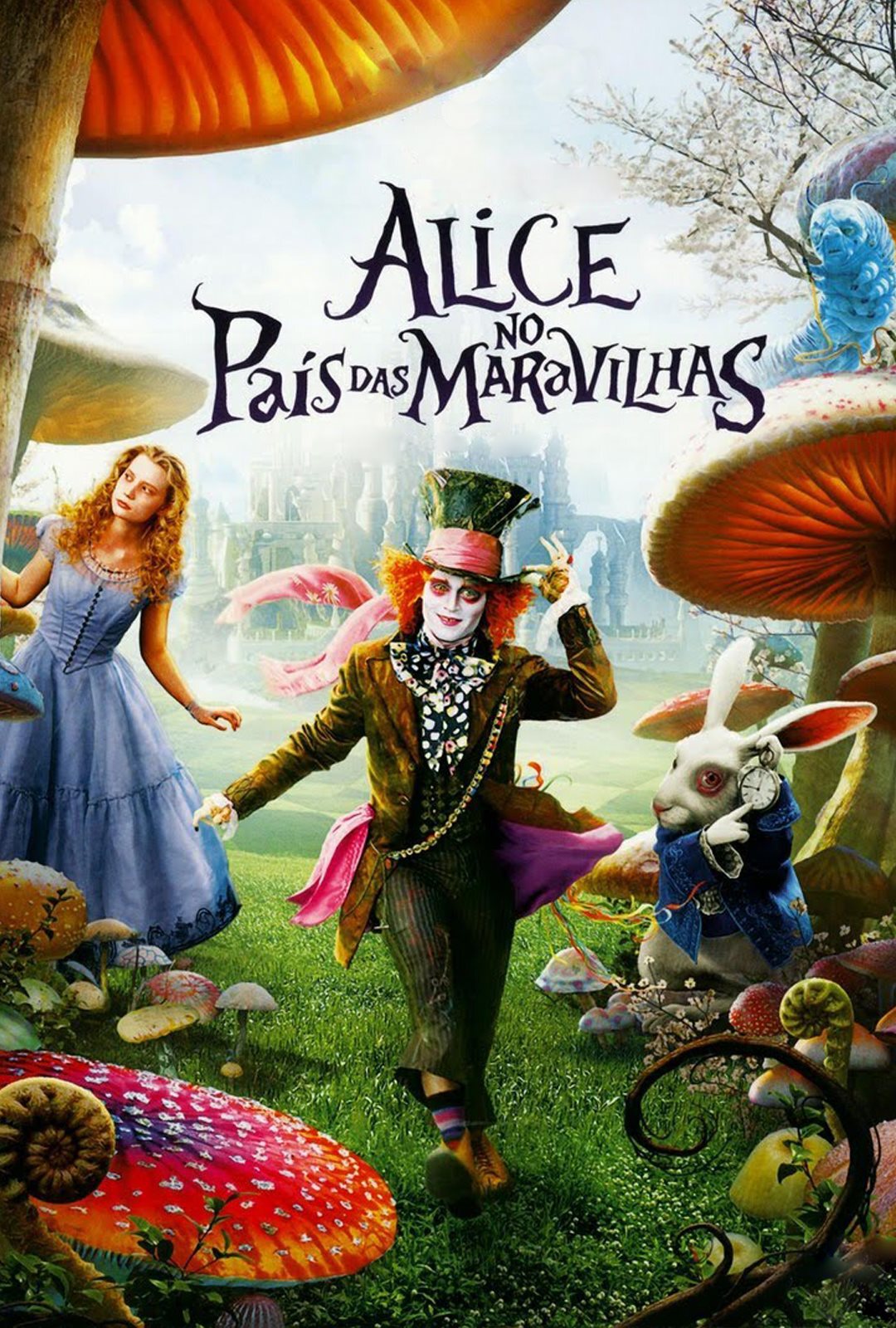
Director: Tim Burton. Production company: Walt Disney. United States, 2010.
Inspirado no livro clássico de Lewis Carroll, o filme Alice no País das Maravilhas, dirigido por Tim Burton, conta a história de Alice, uma jovem de 17 anos que, ao fugir de uma proposta de casamento arranjado, volta ao País das Maravilhas, local onde esteve na infância. Nesse mundo mágico, Alice embarca em uma jornada fantástica, onde encontra personagens inusitados, como o Chapeleiro Maluco e a poderosa Rainha de Copas.
UNIT 3
Wasted! The story of food waste
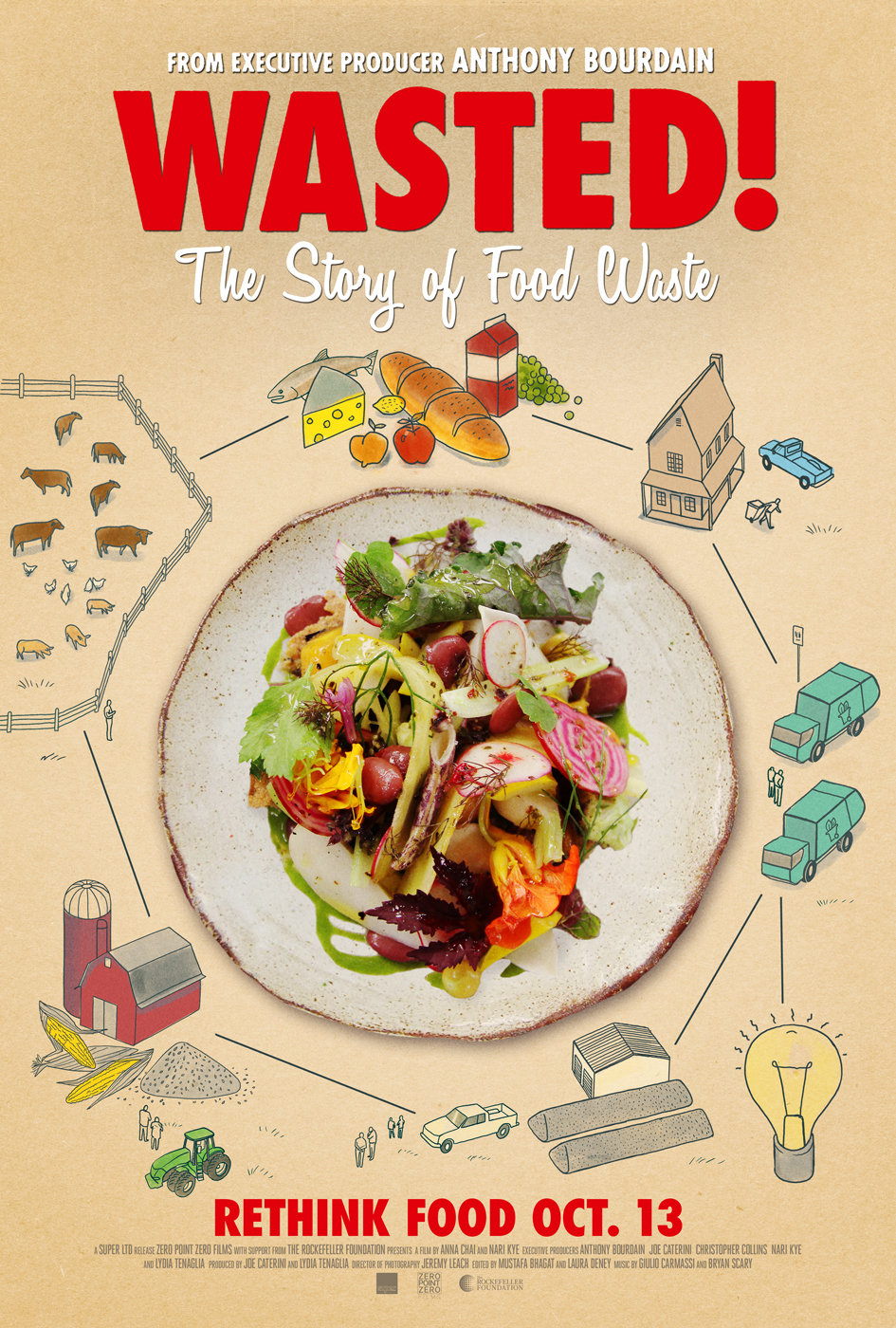
Directors: Anna Chai and Nari Kye. Production company: Zero Point Zero Production. United States, 2017.
Documentário sobre o consumo consciente de alimentos, Wasted! The Story of Food Waste, mostra como chefs de cozinha de todo o mundo utilizam, na preparação de pratos saborosos e nutritivos, ingredientes que muitas pessoas consideram restos. Com essa atitude, além de alimentar as pessoas, os profissionais ajudam a criar um sistema alimentar sustentável. A produção mostra como cada um de nós pode fazer pequenas mudanças – todas elas deliciosas – para resolver um dos maiores problemas do século vinte e um: o desperdício de alimentos.
UNIT 4
O encantador de livros
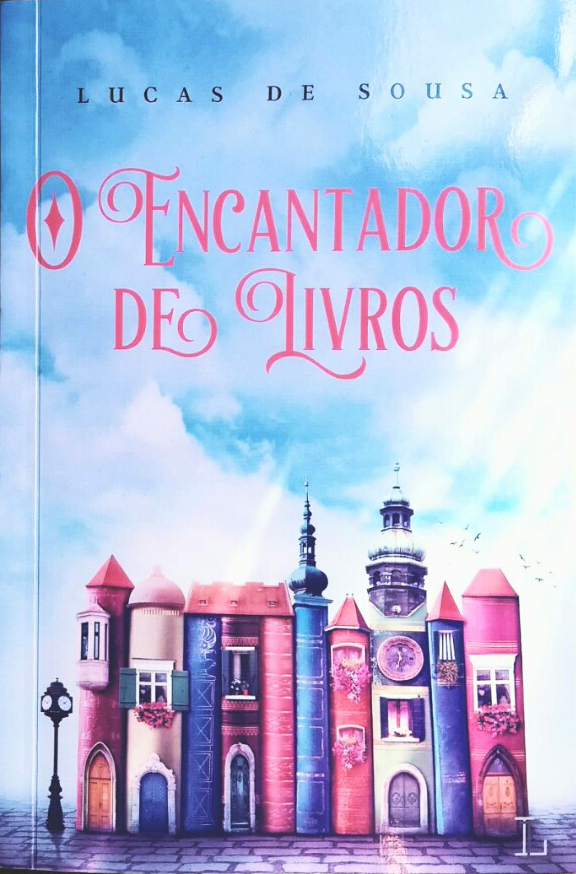
Author: Lucas de Sousa. Publisher: Ler Editorial. Brazil, 2016.
O encantador de livros apresenta a história de Benjamim, um garoto que possui profunda paixão por livros, mas que guarda um grande segredo: ele não sabe ler! Em sua cidade, o menino é conhecido como o “apanhador de livros” por sair todos os dias de porta em porta pedindo doações de livros, que guarda no porão de sua casa, onde passa muito tempo admirando-os enquanto aguarda a chegada do famoso Encantador de Livros, um contador de histórias capaz de fazer com que os livros voem. Contudo, Benjamim e seus amigos se deparam com uma novidade do prefeito da cidade e se veem obrigados a assumir a missão de enfrentar essa difícil ameaça.
UNIT 5
A boa mentira
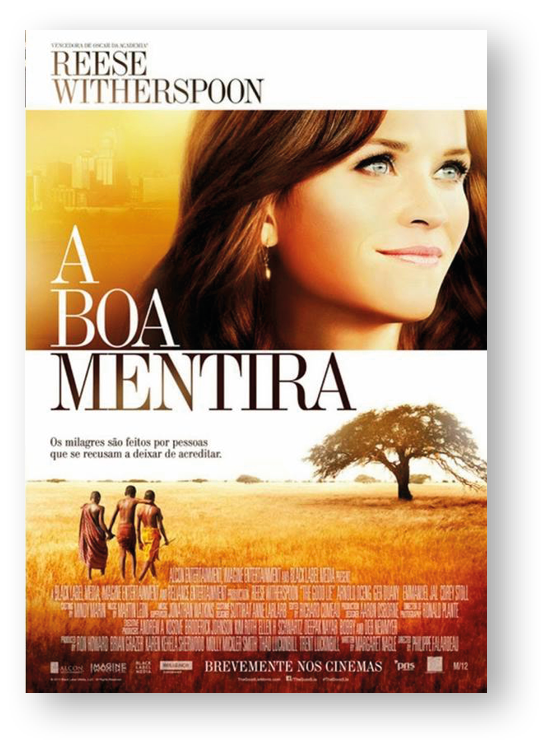
Director: Philippe Falardeau. Production company: Warner Bros. Entertainment. United States, 2014.
Inspirado em fatos reais, o filme A boa mentira conta a história de jovens sudaneses que saem de seu país natal por causa de uma guerra e conseguem se refugiar nos Estados Unidos. Lá, são acolhidos por Carrie, uma assistente social que lhes dá abrigo, comida e trabalho. Juntos, esses jovens deverão se adaptar a uma cultura totalmente diferente da sua. Ao mesmo tempo, a história pessoal e a bagagem emocional de cada um deles fazem Carrie mudar sua fórma de ver o mundo.
UNIT 6
Fun science – Ciência divertida
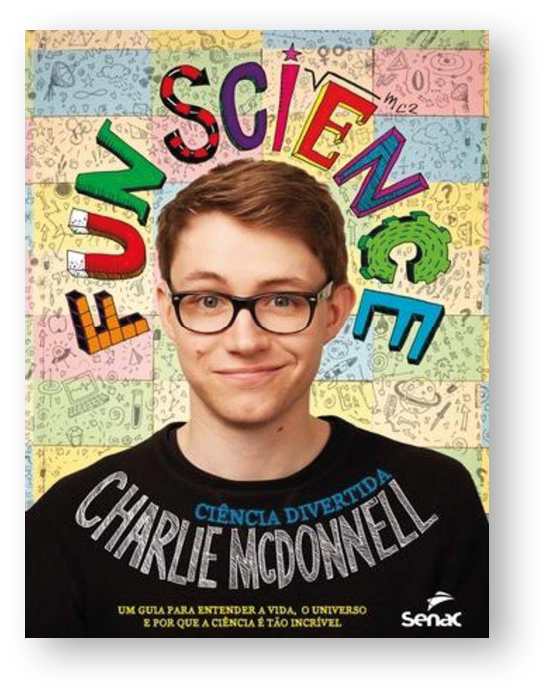
Author: Charlie Mcdonnell. Publisher: Editora Senac São Paulo. Brazil, 2017.
O livro apresenta uma viagem pelo divertido mundo da ciência. Com diversas ilustrações e várias páginas de informação, Charlie Mcdonnell leva os leitores a uma incrível viagem pelo cosmos. Começando pelo Big Bang, passa pelo Sistema Solar e as origens da vida até chegar às partículas que dão fórma a tudo o que existe, inclusive a nós próprios.
UNIT 7
Imagine
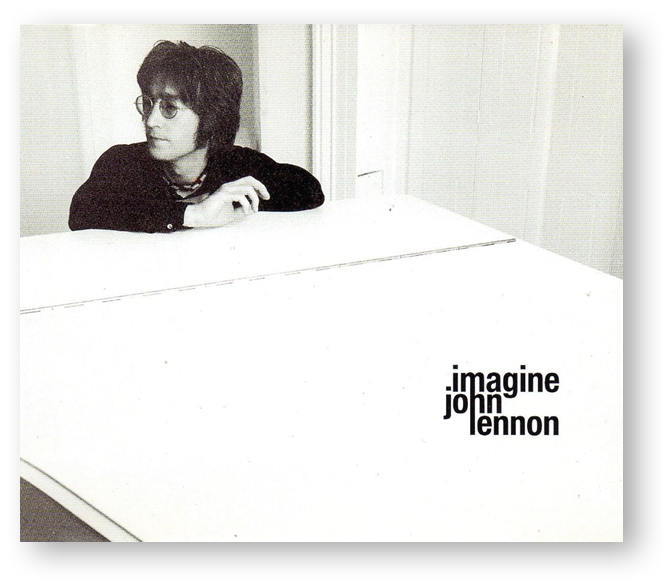
John Lennon. Imagine. Parlophone, 1999.
Canção composta e interpretada pelo músico britânico John Lennon, “Imagine” convida o ouvinte a imaginar um mundo de paz, onde não haja desigualdade entre as pessoas nem conflitos. A letra sugere que a imaginação pode melhorar o mundo.
UNIT 8
Museu Virtual de Instrumentos Musicais
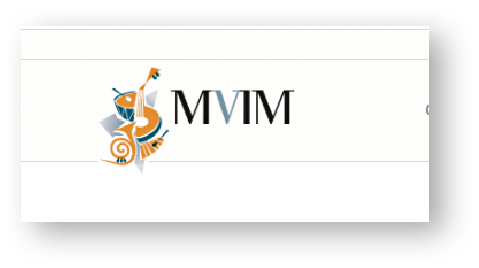
Available at: https://oeds.link/OKjuzW. Accessed on: May 24, 2022.
No Museu Virtual de Instrumentos Musicais, podem ser conhecidos alguns exemplares de instrumentos antigos, classificados em aerofones, cordofones, idiofones e membranofones. Ao escolher um instrumento, é possível acessar, além de informações específicas sobre ele, áudios e vídeos que mostram os sons que produz.

líst óvirégiuler vãrbs
|
Base form |
Past simple |
Past participle |
Translation |
|---|---|---|---|
|
be |
was, were |
been |
estar; ser |
|
beat |
beat |
beaten |
bater; derrotar, vencer; supercar |
|
become |
became |
become |
tornar-se |
|
begin |
began |
begun |
começar |
|
bet |
bet |
bet |
apostar |
|
blow |
blew |
blown |
soprar |
|
break |
broke |
broken |
quebrar |
|
bring |
brought |
brought |
trazer |
|
build |
built |
built |
construir |
|
buy |
bought |
bought |
comprar |
|
catch |
caught |
caught |
capturar, pegar |
|
choose |
chose |
chosen |
escolher |
|
come |
came |
come |
vir |
|
cut |
cut |
cut |
cortar |
|
deal |
dealt |
dealt |
dividir, repartir; lidar; negociar, tartar |
|
do |
did |
done |
fazer |
|
draw |
drew |
drawn |
atrair, chamar a atenção; desenhar |
|
dream |
dreamed/dreamt |
dreamed/dreamt |
sonhar |
|
drink |
drank |
drunk |
beber |
|
drive |
drove |
driven |
dirigir |
|
eat |
ate |
eaten |
comer |
|
fall |
fell |
fallen |
cair |
|
feel |
felt |
felt |
sentir |
|
fight |
fought |
fought |
brigar; lutar |
|
find |
found |
found |
encontrar |
|
fit |
fit |
fit |
ajustar; caber, servir |
|
flee |
fled |
fled |
escapar, fugir; evitar |
|
forget |
forgot |
forgotten |
esquecer |
|
get |
got |
gotten |
adquirir; conseguir, obter; receber |
|
give |
gave |
given |
dar |
|
go |
went |
gone |
ir |
|
grow |
grew |
grown |
crescer; cultivar |
|
have |
had |
had |
ter |
|
hear |
heard |
heard |
ouvir |
|
hide |
hid |
hidden |
esconder, ocultar |
|
hold |
held |
held |
abraçar; segurar |
|
keep |
kept |
kept |
manter |
|
know |
knew |
known |
conhecer; saber |
|
lay |
laid |
laid |
colocar, pôr; deitar |
|
lead |
led |
led |
comandar, conduzir; levar |
|
learn |
learned/learnt |
learned/learnt |
aprender |
|
Base form |
Past simple |
Past participle |
Translation |
|---|---|---|---|
|
leave |
left |
left |
abandonar, deixar |
|
let |
let |
let |
deixar, permitir |
|
lose |
lost |
lost |
perder |
|
make |
made |
made |
fazer |
|
mean |
meant |
meant |
significar |
|
meet |
met |
met |
conhecer; encontrar |
|
misunderstand |
misunderstood |
misunderstood |
entender mal, interpretar mal |
|
overcome |
overcame |
overcome |
supercar |
|
pay |
paid |
paid |
pagar |
|
put |
put |
put |
colocar |
|
read |
read |
read |
ler |
|
rise |
rose |
risen |
erguer, levanter |
|
run |
ran |
run |
correr |
|
say |
said |
said |
dizer |
|
see |
saw |
seen |
ver |
|
seek |
sought |
sought |
buscar; objetivar |
|
send |
sent |
sent |
enviar |
|
set |
set |
set |
ajustar, marcar, pôr em determinada condição |
|
shake |
shook |
shaken |
sacudir |
|
shine |
shone |
shone |
brilhar, reluzir |
|
show |
showed |
showed/shown |
apresentar, mostrar |
|
sing |
sang |
sung |
cantar |
|
sit |
sat |
sat |
sentar |
|
sleep |
slept |
slept |
dormir |
|
speak |
spoke |
spoken |
falar |
|
spend |
spent |
spent |
gastar (dinheiro); passar (tempo) |
|
spread |
spread |
spread |
espalhar |
|
stand |
stood |
stood |
estar em pé; suportar |
|
steal |
stole |
stolen |
roubar |
|
strive |
strove |
striven |
esforçar-se, lutar |
|
swim |
swam |
swum |
nadar |
|
take |
took |
taken |
pegar |
|
teach |
taught |
taught |
ensinar |
|
tell |
told |
told |
contar, relatar |
|
think |
thought |
thought |
achar, pensar |
|
throw |
threw |
thrown |
arremessar, jogar |
|
understand |
understood |
understood |
compreender, entender |
|
wear |
wore |
worn |
usar, vestir |
|
win |
won |
won |
ganhar |
|
write |
wrote |
written |
escrever |
* O sentido dos verbos pode variar de acordo com o contexto de uso.

réfrences
ABOOBAKER, A. Economic stagnation and inequality writ large in the school of monopoly capital. Business Day. Joanesburgo, África do Sul, 4 agosto 2018. Disponível em: https://oeds.link/70ru7n. Acesso em: 22 abril 2022.
Artigo de opinião escrito por Adam Aboobaker, professor do Departamento de Economia da Universidade de Massachusetts Amherst sobre a política econômica da África do Sul.
BANGOR DAILY NEWS. Bangor, Maine, Estados Unidos: Bangor.
Jornal estadunidense que cobre parte do centro e leste do Maine, publicado seis dias por semana.
BBC NEWS. Twenty top predictions for life 100 years from now. Reino Unido, 16 janeiro 2012. Disponível em: https://oeds.link/erC6T1. Acesso em: 22 abril 2022.
Reportagem com previsões de leitores sobre a fórmacomo viveremos em 100 anos, publicada em 2012 no BBC News, um dos jornais mais relevantes do mundo.
BRITANNICA Student Encyclopaedia. Chicago, Estados Unidos: Encyclopaedia Britannica, 2010.
Enciclopédia desenvolvida para crianças no início do ciclo escolar, apresenta artigos e curiosidades sobre uma vasta gama de assuntos.
BUSINESS DAY. Johanesburgo, África do Sul: Arena Holdings. Jornal diário.
Um dos principais jornais da imprensa sul-africana com séde em Johanesburgo.
CARTER, L. Foreword. In: BURROUGHS, E.R. The people that time forgot. Cambridgeshire, Reino Unido: Gateway, 2013.
Segundo romance ficcional da trilogia Caspak do escritor estadunidense Edgar Rice Burroughs.
CLARKE, F. Favela. NGOs rewrite social identities and combat stigma, affirms new LSE study. RioOnWatch: Community report.
Conclusões de pesquisa do Underground Sociabilities que acompanha organizações não governamentais, como o AfroReggae e a CUFA, a fim de colaborar para que as favelas cariocas quebrem os estereótipos de violência e de relação com as drogas.
COLLINS Cobuild New Student’s Dictionary. segunda edição Glasgow, Reino Unido: HarperCollins, 2002.
Dicionário monolíngue da língua inglesa, oferece um guia dos principais tópicos gramaticais da língua, assim como exemplos de emprego dos vocábulos em sentenças de uso cotidiano. Destaca também palavras de uso frequente, apresenta ilustrações explicativas e uma seção com dicas de uso do dicionário.
DATA_LABE. Broken connection Part 1: When there is no Internet access. RioOnWatch: community report on Rio, Rio de Janeiro, 22 janeiro 2018. Disponível em: https://oeds.link/Iu5VuO. Acesso em: 23 abril 2022.
Primeiro artigo de uma série em quatro partes sobre o acesso à Internet em favelas e periferias urbanas no Brasil.
DAVIES, J.; LLUBERAS, R.; SHORROCKS, A. Global Wealth Report 2017. Zurich: Credit Suisse Research Institute, 2017.
Relatório do Credit Suisse Research Institute com informações detalhadas sobre a evolução dos níveis de riqueza das famílias ao redor do mundo, entre 2010-2017.
DAYBREAK. Criação: Solar tê vê Network, Radio Philippines Network. Produção: Solar News Channel, Phillipines, Filipinas, 14 agosto 2014. Programa de tê vê.
Noticiário filipino matutino em língua inglesa, com manchetes diárias sobre clima, tráfego, entretenimento, entre outros assuntos.
DEACON, D. A.; CALVIN, P. An international study of weaving, knitting, sewing, quilting, rug making and other fabric arts. Jefferson, Carolina do Norte, Estados Unidos: McFarland, 2014.
Apanhado histórico sobre as fórmas pelas quais mulheres ao redor do mundo transformam suas vivências sociopolíticas através da arte em tecido.
GEFTER, A. Top scientists predict the future of science. New Scientist. abre colchetesem localdois pontossem nomefecha colchete, 9 junho 2009. Disponível em: https://oeds.link/WWcgrR. Acesso em: 22 abril 2022.
Artigo que compõe uma coleção de ensaios produzidos por alguns dos cientistas mais renomados do mundo sobre o futuro do universo a partir da cosmologia, psicologia e moralidade.
GOPNIK, A. Silent treatment: The case for Buster Keaton. The New Yorker. Nova Iorque, Estados Unidos: Condé Nast, 31 janeiro 2022. Disponível em: https://oeds.link/xt5ewL. Acesso em: 25 maio 2022.
Reportagem sobre a vida de Buster Keaton, ator e diretor estadunidense considerado um dos principais nomes do cinema mudo ao lado de Charlie Chaplin.
INGRAHAM, C. How rising inequality hurts everyone, even the rich. The Washington Post. Washington D.C., Estados Unidos, 6 fevereiro 2018. Disponível em: https://oeds.link/6KKI57. Acesso em: 22 abril 2022.
Reportagem do jornal The Washington Post sobre estudos que afirmam que, a longo prazo, mais desigualdade significa menos riqueza para todos.
JARVIE, J. Q&A: U.N.’s poverty and human rights special rapporteur finds U.S. policies reward wealthy, punish poor. Los Angeles Times. Los Angeles, Estados Unidos, 2 junho 2018. Disponível em: https://oeds.link/zAuXlP. Acesso em: 22 abril 2022.
Artigo sobre questões relacionadas à pobreza e aos direitos humanos nos Estados Unidos, escrito pelo relator especial das Nações Unidas Philip Alston.
LARDIERI, A. Study: minorities labeled learning disabled because of social inequalities. U.S. News. Washington, D.C., Estados Unidos, 21 agosto 2018. Disponível em: https://oeds.link/7O3982. Acesso em: 22 abril 2022.
Artigo sobre estudo desenvolvido acerca da relação entre minorias, problemas de aprendizagem e desigualdade social.
LEARNING to live with COVID: why some experts say it’s time to ‘manage’ the virus. CBC-Radio Canada. 8 janeiro 2022. Disponível em: https://oeds.link/dW4W0g. Acesso em: 1 março 2022.
Reportagem sobre os reflexos da nova variante Ômicron no que diz respeito ao controle da pandemia causada pelo Coronavírus.
LITTLER, J. Inequality is under attack – but what should equality really look like? The Guardian. Londres, Reino Unido, 4 janeiro 2018. Disponível em: https://oeds.link/lHKi0y. Acesso em: 20 abr. 2023.
Artigo sobre igualdade social publicado no jornal The Guardian.
LUPINŠEK, P. Street art in Yogyakarta, Indonesia: messages of the streets. In: COSTA, P.; GUERRA, P.; NEVES, P. S. Urban intervention, street art and public space. Lisbon: Urban Creativity, 2017.
Texto sobre um dos principais centros de cultura e artes na Indonésia, Yogyakarta, também conhecido como Jogja, um dos principais locais para descobrir a arte de rua.
MARKS, D. Molas: Dress, identity, culture. Albuquerque, Novo México, Estados Unidos: University of New Mexico Press, 2016.
Este livro apresenta as molas, arte tradicionalmente produzida pelas mulheres do povo Kuna, uma importante expressão cultural da identidade desse povo.
MARSHALL, L. How I offended an entire class through cultural ignorance. Around the world: with teacher-traveler Lillie, Boston, Estados Unidos, 22 março 2010. Disponível em: https://oeds.link/M8rYjx. Acesso em: 30 abril 2022.
Artigo que aborda como pode ser surpreendente o contato com expressões culturais de povos diferentes.
MIZRAHI, I. Storytelling is a different story for each culture. Forbes. [Estados Unidos]. 19 fevereiro 2019. Disponível em: https://oeds.link/GcujHI. Acesso em: 1º maio 2022.
Reportagem sobre o conceito de storytelling em diferentes culturas.
MOON, L. Y. The shoes. Flash Fiction Magazine. abre colchetesem localdois pontossem nomefecha colchete. 8 agosto 2017. Disponível em: https://oeds.link/UMMi13. Acesso em: 20 abril 2022.
Pequeno conto do cotidiano cujo enredo gira em torno do sapato de uma criança: os pais inicialmente acreditam que a filha está incomodada com o sapato, mas ela se incomoda com o que ele representa.
MOORE, J. Inequality has fallen, says IFS, but levels of grinding poverty are unchanged. The Independent. Kensington, Londres, Reino Unido. 19 julho 2017. Disponível em: https://oeds.link/L3bvYg. Acesso em: 22 abril 2022.
Reportagem sobre a Resolution Foundation, que discute o aumento da desigualdade.
NEW SCIENTIST. Londres, Reino Unido: New Scientist, número 3 376, 5 março 2022.
Revista que promove a divulgação de temas e experimentos científicos e tecnológicos.
NEW YORK. Nova York, Estados Unidos: Vox Media. 14-27 fevereiro 2022.
Editorial sobre Nova York divulgado no Vox Media, uma empresa líder em mídia que divulga notícias por meio do jornalismo digital.
NOLAN, B. How inequality is affecting nations’ economic growth. Eyewitness News. África do Sul, 8 agosto 2018. Disponível em: https://oeds.link/FsT8nM. Acesso em: 22 abril 2022.
Programa de notícias veiculado na internet e em rádio sul-africana que expõe o aumento de desigualdade como um desafio a ser combatido pelos países da Ô cê dê É.
NOVA, A. Retirement incomes will become more unequal, study finds. CNBC. Englewood Cliffs, Nova Jersey, Estados Unidos, 7 agosto 2018. Disponível em: https://oeds.link/iNTMAH. Acesso em: 22 abril 2022.
Reportagem sobre a tendência de crescimento da desigualdade de renda e seu impacto na aposentadoria e na qualidade de vida da terceira idade nos Estados Unidos.
O’BRIEN, E. J.; COOK, A. E.; LORCH, R. F. Inferences during reading. Cambridge, Reino Unido: Cambridge University Press, 2015.
Livro com discussões sobre Psicologia Cognitiva com base em relações com a inferência, o ato de pensar logicamente e a influência no ato da leitura.
OMBOGO, G. Courts must fight poverty and inequality in society. The Saturday Standard. Nairóbi, Quênia, 19 agosto 2018. Disponível em: https://oeds.link/EcaicL. Acesso em: 22 abril 2022.
Reportagem referente ao sistema judiciário e democrático do Quênia.
ORION Jean is Time’s 2021 kid of the year. Entrevistadora: Angelina Jolie. Time. Nova York, Estados Unidos, página 18-19, 9 fevereiro-7 março 2022.
Entrevista com Orion Jean sobre suas ações humanitárias e eventos como o Time’s Child de 2021.
PATEL, N. V. Michio Kaku predicts the future of humans on Mars by 2100. Inverse. 21 abril 2017. Disponível em: https://oeds.link/3j6TEI. Acesso em: 22 abril 2022.
Reportagem de 2017 com previsões de Michio Kaku, famoso físico, sobre o futuro da humanidade em Marte.
RAGANS, R. ArtTalk. Woodland Hills, Califórnia, Estados Unidos: Glencoe/McGraw-Hill, 2005.
Livro de arte destinado a desenvolver a sensibilidade estética e a criatividade dos estudantes, por meio do conhecimento da história da arte e de experiências práticas.
RICHEST 1 percent will own more than the rest by 2016: Oxfam. Reuters. Londres, Reino Unido, 19 janeiro 2015. Disponível em: https://oeds.link/3aWGSn. Acesso em: 23 abril 2022.
Reportagem sobre a previsão de distribuições de riquezas para o ano de 2016.
RISING economic inequality should worry us. Bangor Daily News. Bangor, Maine, Estados Unidos: Bangor Publishing Company, 11 março 2018. Disponível em: https://oeds.link/YhXdPL. Acesso em: 22 abril 2022.
Reportagem que expõe a preocupação sobre a crescente desigualdade econômica.
SCIENCE. [Estados Unidos]: American Association for the Advancement of Science.
Revista sem fins lucrativos lançada pela Associação Americana para o Avanço da Ciência, fundada em 1848. Conta com mais de 10 milhões de participantes que defendem a autonomia da classe científica e pesquisas favoráveis à humanidade.
SEIDMAN, K. Montreal is first venue in Northern Hemisphere to host World Social Forum. Montreal Gazette, Montreal, Canadá, 10 agosto 2016. Disponível em: https://oeds.link/xug3Za. Acesso em: 22 abril 2022.
Reportagem sobre o Fórum Social Mundial 2016 com participantes de todo o mundo que discutem justiça e opções para as crises mundiais.
TEEN INK. Atlanta, Geórgia, Estados Unidos: Young Authors Foundation. Verão 2005.
Revista mensal comercializada e escrita por adolescentes, publicada pela Young Authors Foundation, empresa sem fins lucrativos.
THE DAILY TELEGRAPH. Londres, Reino Unido.
Jornal londrino, fundado em 1855 e distribuído no mundo todo.
THE GUARDIAN. Londres.
Jornal independente, um dos mais lidos no mundo, é conhecido por publicar furos jornalísticos e histórias de impacto social e econômico relevantes.
THE NEW YORKER. Nova York.
Jornal estadunidense fundado em 1925 e com 47 edições anuais.
THE TELEGRAPH. Londres.
Jornal britânico fundado em 1855.
THE WASHINGTON POST. Washington Nash Holdings LLC.
Jornal diário dos Estados Unidos, publicado em Washington, D.C.
THREE predictions for the future of the internet. It News Africa.com. 17 março 2014. Disponível em: https://oeds.link/AAad7G. Acesso em: 22 abril 2022.
Reportagem com o inventor do World Wide Web, que fala sobre as mudanças na internet nesses 25 anos e o que se espera para o futuro.
TIME OUT. Londres, Reino Unido: Time Out Group.
Jornal cosmopolita fundado em 1968 e presente em diversos países, especialmente na Europa.
TITCOMB, J.; MURGIA, J. Back to the future day: six experts predict life in 2 045. The Telegraph. Londres, Reino Unido: Telegraph Media Group. 21 outubro 2015.
Reportagem sobre a previsão de especialistas em relação ao futuro, uma alusão ao filme De volta para o futuro, de 1985.
UNITED NATIONS. Rising inequality affecting more than two-thirds of the Globe, but it’s not investable: new UN report. UN News, abre colchetesem local 21 janeiro 2020. Disponível em: https://oeds.link/VHLasw. Acesso em: 16 maio 2022.
Reportagem publicada no site das Nações Unidas sobre a ideia de que a desigualdade social é crescente para mais de 70% da população e que é possível reduzir esse número.
WALLACE, T. Inequality falls as low earners’ wage growth outstrips the rich. The Telegraph. Londres, Reino Unido, 26 julho 2018. Disponível em: https://oeds.link/5vSDsa. Acesso em: 22 abril 2022.
Reportagem sobre salários e desigualdade social.
WILKINSON, R.; PICKETT, K. The spirit level: Why more equal societies almost always do better. Londres, Reino Unido: Allen Lane, 2009.
Livro que aborda a equidade social como um fator para tornar as sociedades mais fortes.
WLOS News 13. Estados Unidos.
Página referente ao canal de notícias estadunidense WLOS.
ZINNI, Stefano. Travel stories. abre colchetesem local Uccio, 2018. 448 páginaE-book.
Livro que apresenta as experiências de viagens do autor e sugestões sobre como aproveitar os aprendizados que vieram com sua vivência.

Transcrição dos áudios
Encontra-se a seguir a transcrição dos áudios que são trabalhados ao longo do livro, com a indicação da respectiva atividade e página.
UNIT 1
Listening
– página 29
Unit 1 - Culture News - Part I
And how about this for the weekend? A fair that offers something for art and food lovers. Pat Fernandez returns to show us around the Greenfield Weekend Market.
It’s a market, but more than just a market. It’s a food place, but not just an ordinary food place.
Unit 1 - Culture News - Part II
Greenfield Weekend Market is an open space where anyone and everyone can do anything and everything. Aside from restaurants and stores, this hotspot in the metro also offers the host of other activities that promote arts and culture.
Greenfield Weekend Market is open on Saturdays from four p.m. to twelve midnight.
So, if you wanna break away from the usual malls and restaurants, remember there’s something different waiting for you at the Greenfield Weekend Market.
UNIT 2
Listening
– página 48
Unit 2 - Oral theater review - Part um
Hi, this is Iain and tonight and I’ve seen SpongeBob SquarePants. Now, I went into the theater thinking, “well, I’ve never watched SpongeBob, I’m not sure I’ll understand it”. But I went in and I totally understood it. You don’t… You get to kind of understand the characters as the show goes along. And you hear them say, like, “hey SpongeBob!” or something. Like, you get to hear their names and you really understand it. But also, if you do watch SpongeBob, hmm… Like my friend Phoebe, who was sitting next to me. She also did a lot of explaining, I think that helped.
Unit 2 - Oral theater review - Part dois
Hmm… if you do like the show though, I’m… I’m pretty sure you’ll get it. I mean, anyone gets this show basically. It’s really good. It’s not just for kids, it… Some shows, like, when you… when you think about it, some people will be like “well, that’s for kids, clearly, it’s a show about a cartoon, it’s for kids, not for grown-ups”. There were so many grown-ups in the audience! So, it is for kids and grown-ups, and it’s incredible.
UNIT 3
Listening
– página 67
Unit 3 - Educational advertisement - Part um
A supermarket. Here we buy almost everything we need in our day-to-day lives. Our decisions on what to buy are based on taste, quality and price. But what you might not know is that the decisions we make can have a significant impact. Fairtrade products vastly improve the working and living conditions of families in developing countries. But how does Fairtrade even work? Let’s take this pack of coffee as an example. Fairtrade coffee farmers don’t work alone. They are members of cooperatives and organized democratically.
Unit 3 - Educational advertisement - Part dois
There are many advantages to this system. A central component of the Fairtrade system is the minimum price, which is the minimum that farmers organizations are paid when selling their products through Fairtrade. Additionally, producer organizations receive the Fairtrade premium. It is up to the farmers and workers to decide how to use the premium. They might build wells and hospitals, buy better farming equipment or invest in switching to organic farming. Having a stable income can drastically improve a whole family’s opportunities.
So now, it’s over to you. In your daily shopping, look for the Fairtrade mark and choose products that change lives for over 1.5 million farmers and workers worldwide. Fairtrade, the power is in your hands.
UNIT 4
Listening
– página 86
Unit 4 - Oral flash fiction - Part um
I wanted to feel joy. Should I have the courage to leave my comfort zone? I had a protective umbrella that omitted the real life from me. I was stuck under my umbrella. I stuck my hand out into the sunlight. It was warm and I felt courageous. I remember what my mom told me as a child, “Stay away from the sun. It will give you skin cancer”.
Unit 4 - Oral flash fiction - Part dois
Then my mother died and I never left my umbrella. My umbrella was part of my everyday life. But it left me… left me with sadness and a huge lack of vitamin D. A gust of wind left my hand empty and I shivered as a leaf. The raindrops left my skin and I heard my mother in a faraway distance, “You are now a free soul. Let the sun ray into your life and live a long and happy life. I will guard you”. A bird sang a lullaby.
UNIT 5
Listening
– página 111
Unit 5 - Lecture - Part um
Computers, for example, will become so [chip] cheap that they will cost maybe a penny a piece. Computer power will be everywhere and nowhere. In fact, the word “computer” will disappear from the English language. We will no longer say the word “computer”.
Unit 5 - Lecture - Part dois
In the operating room, doctors already have access to the internet. In the future, they will have access to artificial intelligence. In the middle of an operation, they will ask a computer for the latest information about surgery, about neurology, the heart, the latest information as they are performing the operation. Astronauts will use artificial intelligence as they make repairs on the space station. They will consult with an artificially intelligent computer system as they make the repairs.
UNIT 6
Listening
– página 132
Unit 6 - Interview - Part um
Rio favelas are communities of intense sociability, of intense social life. They have a culture, they are known for the levels of social capital they present. There is trust, there is conviviality, there is culture inside the favelas. They are not only places of poverty and exclusion. And not only places of violence and drug trading. They are places where communities have been able to produce a life that is rich and deserves to be known from what it is.
Unit 6 - Interview - Part dois
We observed a number of new initiatives that were producing social development from below. So, what we decided to do was to look at the responses favela communities were giving to their conditions of life. And we’re studying two grassroots organizations that work in the favelas of Rio: AfroReggae and CUFA.
Unit 6 - Interview - Part três
AfroReggae and CUFA are hybrid organizations. They are mixtures of NGOs, social movements, cultural groups. They have a number of bands. They play in the favelas, but they also play in the mainstream. They connect to all kinds of cultural groups in the city. These are organizations about turning the traditional model into… upside down. They are not people who come from the outside with a proposal to intervene in the favelas, but they were produced by the favelas and work in the favelas.
UNIT 7
Listening
– página 150
Unit 7 - Critical comments - Part um
So today, we’re gonna have you listen to a band and we want you to tell us what you think about their songs and then we’re gonna discuss it afterwards.
Kid 1: Cool.
Kid 2: Let’s go!
Kid 3: I felt like I’ve heard this before.
Kid 4: I think I’ve heard this.
Kid 5: This is upbeat.
Kid 6: What song is this?
Kid 7: I think I know who it is.
Unit 7 - Critical comments - Part dois
Kid 8: I don’t like it.
Kid 9: It’s actually really calm and nice.
Kid 8: That was a boring song.
Kid 10: I liked the tone.
Kid 9: Their melody is really nice.
Kid 2: Queen is amazing! If you ask me who’s your favorite artist, I will always say Freddie Mercury, ’cause he is like a god!
UNIT 8
Listening
– página 167
Unit 8 - Movie scene - Part um
Rani: I don’t understand the purpose of A221.
Todd: A221… That’s a burger brand. Americans eat a lot of beef and some people like to burn their initials into their food with a red-hot iron before they eat it.
Rani: Why?
Todd: Oh, that’s a cattle brand. You know the… the thing you use to burn a symbol into a cow with. No… In America, that’s how you keep track of your cows, is… branding.
Unit 8 - Movie scene - Part dois
Rani: With a red-hot iron?
Todd: Yeah.
Manmeet: But… wouldn’t the cow run away?
Todd: Oh, no. We only do it to baby cows, when they’re small enough to… hold them down. Yes, Asha?
Asha: A suggestion, Mr. Todd.
Todd: Go ahead.
Asha: You need to learn about India.
THERE IS MORE
– página 182
There is more - Unit 1 - Culture news
Man: It’s all things art in Transylvania County this week: 90 art events.
Woman: The week kicked off last Friday with the opening of the Brevard Music Center. Other events this week include the 4th Friday Gallery Walk, open-mic night for writers, music jams and old-time street dancing. That’s a fun one… The arts and culture week comes to an end with a band, with a bang rather, at the 4th of July celebration in downtown Brevard.
– página 182
There is more - Unit 1 - Culture news - Part um
Cape Talk.
Five things to do this weekend!
What we got lined up for you today, by the way, is one theater item, one, uh, pick at the movies, in fact two picks at the movies, I think, for you to go and see, we’re gonna suggest a shopping event at the Cape Town International Convention Center, a musical event that you might want to check out, and, uh, finally we’re gonna let you know about a very fun family event that’s actually been running for several weeks and months already and which is coming to an end this weekend.
There is more - Unit 1 - Culture news - Part dois
We can start at the Cape Town International Convention Center. If you are a Shopaholic with a nose for a bargain then the place you want to be this weekend is at the CTICC for the annual Factory shop Expo. You’re gonna find bargains and discounts and clearance deals Galore and, don’t take my word for it, let’s hear from the organizer of the Factory Shop Expo Shahieda Van Der Schyff who joins me now.
- página 185
There is more - Unit 3 - NGO News
Wild Aid is an international organization headquartered in San Francisco, in the US, but it has its largest office in China. And what we specialize in is big media campaigns to reduce consumed amount for wildlife products made of threatened species. So in a, in a nutshell what we do is, is try to persuade people not to buy things like shark fin, rhino horn, elephant ivory, pangolin scales and things like this. And since most of the buyers of these types of products are in Asia, we have until now really focused our work in Asia.
– página 187
There is more - Unit 4 - Oral flash fiction - Part um
Don’t go near the well, by A. B. England
There was a legend about the well in the garden. Isaac didn’t believe it, of course. It was just a silly story adults told their children to scare them away from it. Everyone knew fairies weren’t real. So there was no reason whatsoever he should feel guilty about daring Mary to go sit inside the fairy ring beside it.
“But that’d make Queen Mab mad at me!” she’d cried.
“Well then, I guess you’re too little to play with us,” he said in return.
There is more - Unit 4 - Oral flash fiction - Part dois
Mary looked up at Isaac and his friends with her big, brown eyes brimming with tears. Her lower lip quivered, but she managed not to start crying somehow.
“Fine!” Mary said. She turned around and stomped off toward the old, overgrown garden. “But if I get stolen away, I’m telling mama!” she shouted over her shoulder.
Isaac turned back to his friends. They laughed at Mary’s childish belief as they resumed their game.
He didn’t notice Mary never came back until Mama asked where she was at dinner.
– página 189
There is more - Unit 5 - Interview
Isaac Morehouse: Let’s talk about your book: “The Age of Em”. It’s kind of a prediction, you’re kind of predicting what the future will look like, uhm, and that’s a dangerous thing, but you, you, you know, say that you feel relatively comfortable making, at least, uhm, you know, some, some of these general predictions. And that is the future of robots, or artificial intelligence, or, ahm, emulation is what your, what “Em” is short for, so...
Robin Hanson: It’s a conditional prediction. So, I’m saying: there are several possible ways we can eventually have machines as smart as people, and there is one way that I’ve identified that other people have talked about for a long time and I’m gonna focus on that and tell you, conditionally, if that’s the first way we get smart robots, then what happens?
– página 190
There is more - Unit 6 - Interview
Well, we’ve been measuring quality of life in many different ways, uhm, over the past thirty years, under apartheid and later on, ahm, in terms of, we’ve asked people, South Africans, how happy they are with their lives and also how satisfied they are with their lives – and, of course being satisfied is probably more difficult than simply being happy, because you can help yourself to be happy, but other factors are important for being satisfied. In 1994, one month after the elections, South Africans, black and white, were very happy and satisfied: four in five, at levels that you find in other democracies around the world. Since then, after election euphoria, the levels have dropped that around one in one-half, that is just one in two South Africans say that they are very happy, happy, or satisfied and very satisfied.